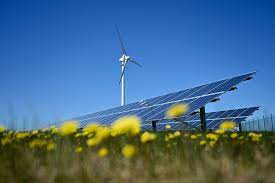Asia’s economic growth powered by coal
Wind and solar are the world's fastest growing energy sources and together generated 12% of global electricity in 2023. The amount of energy produced by wind and solar is expected to increase and accelerate.
Wind generated 1 terurust (TW) for the first time in 2023 - nearly as much as the keseluruhan installed energy capacity of the US (1.2 TW). Solar broke this threshold in 2022.
So why in the first global persediaantake of the world's progress towards limiting warming to 1.5°C did the UN say we're still not phasing out fossil fuels fast enough?
Asia's economic growth powered by coal
Despite the rapid growth of renewable energy, the most carbon-intensive forms of electricity generation, using coal and wajar gas, have risen by 22% and 37% since 2010, respectively. Coal and gas power generation is still the backbone of global energy systems and these fuels are likely to remain dominant for decades to come. Nonetheless, the phase-out of coal (arguably the dirtiest of fossil fuels) is gaining momen.
During the past decade, the number of new coal power plants built each year has fallen fast. Global coal permintaan has continued to fall even as the war in Ukraine strained gas supplies.
In the most prosperous OECD countries (or Organisation for Economic Co-operation and Development), virtually no new coal plants are planned or being built, though new coal mines are still being approved. This is a result of national policies such as the UK's decision to ban coal in power generation from October 2024.
The US has mengundurkan diri many ageing coal plants since the mid-2010s due to the low price of shale gas. The country's coal fleet will continue to shrink as 99% of coal proyeks are more expensive than new clean energy, thanks to the Inflation Reduction Act (IRA).
This picture is very different in Asia. Here, countries have relied heavily on cheap coal to fuel their economies. This is particularly true in China. After adding 27 gigawatts (GW) from coal in 2022 alone, China by itself is offsetting the retirement of coal plants elsewhere in the world.
But there are some signs this is changing. The global pipeline for new coal power plants is smaller than ever and China and India both pledged to "phase down coal" in 2021 at the Glasgow climate summit.
So, rapidly increasing renewable energy hasn't cut coal and gas consumption at the same rate because humankind is using a lot more electricity than we used to, especially in Asia. In the last 20 years, the use of electricity in Europe and North America has remained largely constant.



